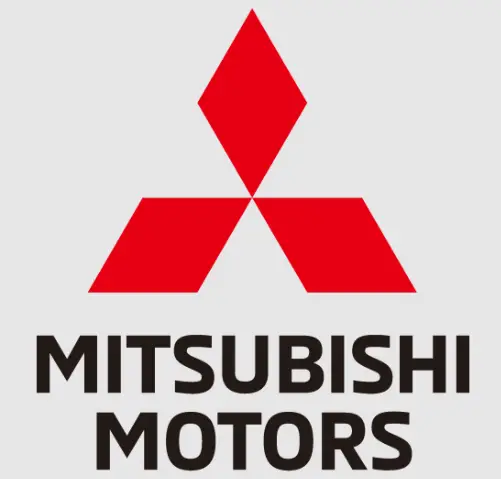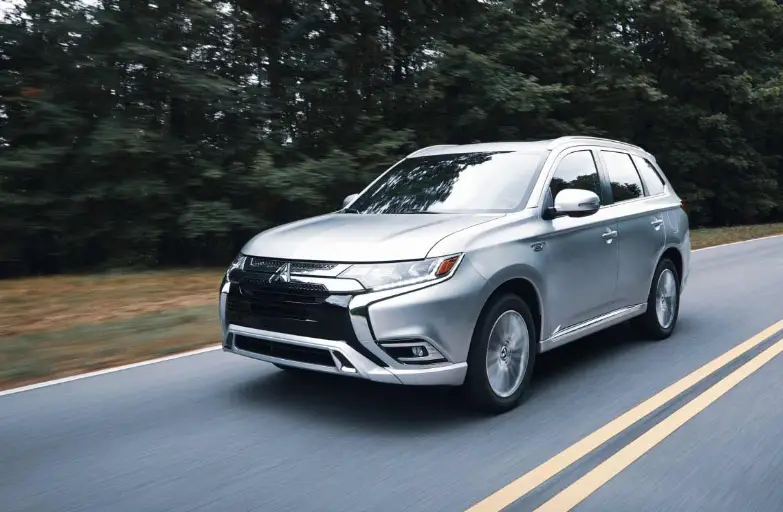
2022 Mitsubishi Outlander PHEV Owner’s Manual
The 2022 Mitsubishi Outlander PHEV is a big step forward in environmentally friendly SUV technology. It combines the Outlander’s usefulness and style with a high-tech plug-in hybrid powertrain. This midsize SUV has a roomy and comfortable cabin for up to five people and a driving experience that is both efficient and kind to the environment. It has a gasoline engine and electric motors that work together to give it an all-wheel drive while lowering emissions and fuel use. With its focus on sustainability and current technology, the 2022 Mitsubishi Outlander PHEV shows how committed the company is to making an SUV that is both versatile and good for the environment.
Charging
Main features
The Plug-in Hybrid EV system on this vehicle will automatically select an optimum driving mode from “EV drive mode”, “Series hybrid mode” and “Parallel hybrid mode” according to the remaining power in the main drive lithium-ion battery and/or driving conditions.
The vehicle is designed to typically use the EV drive mode which drives the vehicle as an electric vehicle by using only electrical power stored in the main drive lithium-ion battery. However, when driving with the Series hybrid mode or the Parallel hybrid mode is required, the EV drive mode will automatically be switched to the Series hybrid mode or the Parallel hybrid mode. The main drive lithium-ion battery can be charged using an EV charging device compatible with your vehicle. The regenerative braking described in this section will also charge the main drive lithium-ion battery when the accelerator pedal is released while the vehicle is moving.
EV drive mode
- The vehicle is driven only by electric motors using the electric power stored in the main drive lithium-ion battery.
- The EV drive mode will automatically be switched to the Series hybrid mode or the Parallel hybrid mode depending on the remaining power in the main drive lithium-ion battery and/or driving conditions, such as vehicle speed and operation of the air conditioner. If you want to drive the vehicle without starting the engine as much as possible, make the switch to the EV priority mode by pressing the EV switch.
- The distance you can drive the vehicle (cruising range) using the EV drive mode varies depending on the remaining power in the main drive lithium-ion battery and/or driving conditions, such as vehicle speed and operation of the air conditioner.
- An estimated cruising range using the EV drive mode can be shown on the information screen.
- Driving at a moderate speed and avoiding rapid acceleration will help obtain a longer cruising range using the EV drive mode. Rapid and repeated accelerations and decelerations consume more electric power from the main drive lithium-ion battery and may reduce the cruising range using the EV drive mode.
- The electric power in the main drive lith-ium-ion battery can be reserved in order to later drive the vehicle using the EV drive mode in a specific area.
Series hybrid mode
The vehicle is driven by the motors only using the electricity generated by the engine. This mode is used when the remaining power in the main drive lith-ium-ion battery becomes low, when quick acceleration is required, or when more propulsion power is required like climbing a hill.
NOTE: While driving the Series hybrid mode, the engine malfunction diagnostic system may operate. If this system operates, the engine sound will decrease. This does not indicate a malfunction.
Parallel hybrid mode
The vehicle is driven mainly by the engine with assistance from the motors. This mode is used when the vehicle is driven at a high speed.
Regenerative braking
Motion energy is converted into electric energy using the motor as a power generator. While decelerating, electric energy will be created and used to charge the main drive lithium-ion battery.
- If you lift your foot off the accelerator pedal while driving, a braking force equivalent to the engine braking of a gasoline or diesel-powered vehicle will be generated.
- Also, if you shift the select position into “B” (REGENERATIVE BRAKE) from “D” (DRIVE), the regenerative brake force will become stronger. Shift the selector lever into the “B” (REGENERATIVE BRAKE) position according to the driving condition.
- As greater brake force is applied by depressing the brake pedal, increased regenerative braking occurs.
- When stronger regenerative braking is generated, the stop lights will illuminate even when the brake pedal is not depressed.
NOTE
- When the main drive lithium-ion battery level is full or nearly full, or the main drive lithium-ion battery temperature is too high or too low, the regenerative braking force may temporarily be reduced or eliminated and stronger service brake effort may be required to operate the brakes. When the main drive lithium-ion battery level is no longer full or near full, or the main drive lithium-ion battery temperature has returned to a normal range, the regenerative brake force will resume.
- If a problem occurs in the Plug-in hybrid EV system, or if the ABS and/or the ASC have been activated, the regenerative braking will be restricted. The service brake will still operate.
Operation of gasoline engine
- When the vehicle is driven in the EV drive mode, the drive mode may automatically be switched to the Series hybrid mode or the Parallel hybrid mode under the following conditions:
- If the temperature of the Plug-in hybrid EV system is too hot or too cold.
- When quick acceleration is applied.
- When the air conditioner is operating.
- When the accelerator pedal is depressed hard on an uphill road or expressway.
- In cold weather.
- If the vehicle has not been refueled for a long period of time.
- When the main drive lithium-ion battery level is low.
- In addition to the above, there are other situations where the EV drive mode may automatically be changed to the series or parallel hybrid mode.
- While the vehicle is stationary, the engine may automatically start. Some examples are;
- When the main drive lithium-ion battery level is low.
- If the temperature of the Plug-in hybrid EV system is too hot or too cold.
- When the air conditioner is operating.
- If the vehicle has not been used for a long period of time.
- If the engine has not been started for a long period of time.
- If the vehicle has not been refueled for a long period of time.
NOTE
- Depending on the usage of the vehicle, the engine may not start for a long period of time, and unused fuel will remain in the fuel tank.
- Fuel can deteriorate over time, which can adversely affect the engine and/or the fuel system.
- If the vehicle is not refueled with more than 4 gallons (15 liters) at least once every three months, the engine will automatically start, while the ready indicator is illuminated, to help prevent deterioration of the fuel. At that time, the charging of the main drive lithium-ion battery will start and the battery charge mode display will appear on the information screen in the multi-information display. The charging will stop, however, before the main drive lithium-ion battery is fully charged.
- The engine may also start even while the EV drive mode is selected or the vehicle is stationary.
- To stop the engine from starting automatically when the vehicle is operated on the main drive lithium-ion battery power only for a long time, start the engine and drive the vehicle enough to reduce the fuel level to approximately half tank. Refill the fuel tank with at least 4 gallons (15 liters) of gasoline.
Refueling (gasoline)
CAUTION
- If the fuel remaining warning display appears in the multi-information display, refuel the vehicle immediately.
- If the vehicle runs out of fuel, electricity cannot be generated by the engine and the following will occur.
- The propulsion power of the vehicle may be reduced since the vehicle must be driven using only electrical power stored in the main drive lithium-ion battery.
- The heater for the air conditioner and the front window defogger will be degraded.
- The catalytic converter may be damaged due to excessive high temperature.
- Depending on the usage of the vehicle, the engine may not start for a long period of time. Unused fuel can deteriorate over time. To avoid this situation, start the engine more than once every three months by activating the battery charge mode, or refill the vehicle with more than 4 gallons (15 liters) more than once every three months after the fuel remaining display is indicated below half.
Main drive lithium-ion battery
WARNING
- The main drive lithium-ion battery is a sealed high-voltage battery and has no user-serviceable parts.
- To avoid severe burns and/or electrical shock that may result in serious injury or death, never attempt to detach the main drive lithium-ion battery from the vehicle or try to disassemble it.
- Never attempt to dispose of or recycle the main drive lithium-ion battery by yourself. Consult with a certified Mitsubishi EV dealer, when the main drive lithium-ion battery is disposed of or recycled.
- Never attempt to use the main drive lithium-ion battery for any other purpose.
FAQ’s
A: The 2022 Mitsubishi Outlander PHEV features a plug-in hybrid powertrain that combines a gasoline engine with electric motors for improved efficiency and reduced emissions.
A: The 2022 Outlander PHEV offers an estimated electric-only driving range of up to 24 miles on a full charge, making it ideal for short commutes and local driving.
A: The Outlander PHEV comes equipped with Mitsubishi’s Super All-Wheel Control (S-AWC) system, which optimally distributes power to each wheel for enhanced traction and stability in various driving conditions.
A: Charging times can vary, but using a Level 2 charger, the Outlander PHEV’s battery can be fully charged in approximately 3.5 hours.
A: The combined power output of the gasoline engine and electric motors in the 2022 Outlander PHEV is approximately 221 horsepower.
A: Yes, the Outlander PHEV can be charged using a standard 120-volt household outlet, but charging times will be longer compared to using a Level 2 charger.
A: The 2022 Outlander PHEV comes in various trim levels, including SEL, Limited Edition (LE), and GT, each offering a range of features and amenities.
A: The Outlander PHEV includes advanced safety features such as adaptive cruise control, lane departure warning, forward collision mitigation, and blind-spot monitoring.
A: Yes, the Outlander PHEV utilizes regenerative braking to recharge the battery while driving, improving energy efficiency.
A: Mitsubishi typically offers a comprehensive warranty for the Outlander PHEV, including a 5-year/60,000-mile basic warranty and a 10-year/100,000-mile powertrain warranty.
A: Yes, the 2022 Outlander PHEV has a towing capacity of up to 1,500 pounds when properly equipped.
A: Depending on your location, there may be government incentives or tax credits available for buying a plug-in hybrid vehicle like the 2022 Outlander PHEV. Check with your local authorities for details.
A: The interior of the 2022 Outlander PHEV is similar to the standard Outlander, offering a spacious and well-appointed cabin with modern technology and comfort features.
A: The 2022 Outlander PHEV distinguishes itself with its all-wheel drive capability, electric-only range, and Mitsubishi’s reputation for reliability and durability.
A: The available exterior colour options may vary by trim level, allowing buyers to personalize their Outlander PHEV to their liking.
2023 Mitsubishi Outlander Specs, Price, Features, Mileage (Brochure)
Useful Links
2022 Mitsubishi Mirage G4 Owner’s Manual
2023 Mitsubishi Outlander PHEV Owner’s Manual
Relate Article
2024 Mitsubishi OUTLANDER Specs, Price, Features, Mileage (Brochure)
2024 Mitsubishi MIRAGE Specs, Price, Features, Mileage (Brochure)
2023 Mitsubishi Triton Specs, Price, Features, Mileage (Brochure)
2023 Mitsubishi ASX Specs, Price, Features, Mileage (Brochure)

